3.3 Waves and topography
3.3.1 Waves in shallow water
In the previous section we focused on waves in the deep ocean - at at least water deeper than half a wavelength, which we saw was about the maximum depth at which waves disturb the water. What happens when waves enter shallower water?

As the animation shows, the previously circular particle paths are now disrupted by the shallow bottom, becoming longer in the horizontal direction. The wave is now driving water forwards and backwards along the seabed, so it will start to lose energy much faster than it did in deep water.
The wave will slow down, ultimately reaching a speed dictated not by its period but by the water depth. This occurs at a depth equal to around a twentieth of the wavelength:
| Water depth (meters) | 1 | 2 | 3 | 5 | 10 | 20 |
| Maximum wave speed (knots) | 6 | 8.5 | 10.5 | 13.5 | 19 | 27 |
Notice that these speeds get much lower than 30-60 knots that 10-20 second period swell moves at in deep water.
The animation below illustrates what happens when waves slow down as the water becomes shallow:
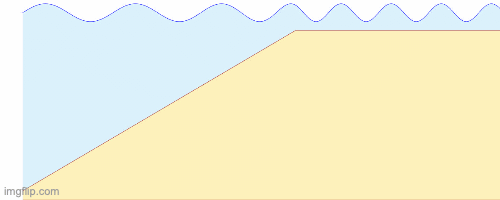
Notice that as the waves slow down, they have to get closer together - their wavelengths become shorter. And because of this, they become steeper. Here’s a simplified view of the same thing from above - here the blue lines show the wave crests:
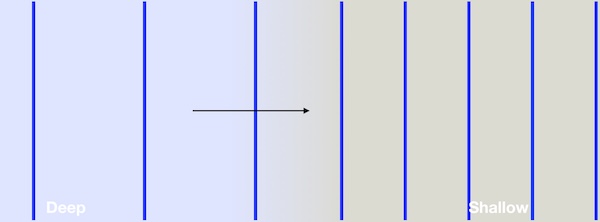
We’ll be using similar diagrams to illustrate some of the more complex shallow water phenomena.
When the depth decreases still further - to about a twentieth of the original wavelength - the wave height starts to increase, which makes the waves even steeper.
3.3.2 Refraction and focusing
We now know what happens to waves when they enter shallow water - they slow down and become closer together. In the diagrams above, we showed the waves running along the direction in which the seabed got shallower. What happens when this isn’t the case - when waves move over a shallow shelf or reef that has an edge that’s angled to the direction. of the wave crests?
We know the wavelength of the waves before they enter the shallows, and it seems sensible that once they’re over the shallow areas they have the same wavelength as if they’d approached the shallow area head-on. And obviously, the wave crests need to line up over the step up into the shallows. The only way all this can be true is if the angle of the waves changes between deep and shallow water:

This process, where the waves turn in to shallower water is called refraction. Normally, the seabed gets shallower slowly and the wave crests will bend rather than change directly as abruptly as in the diagram above. This explains why the crests of surf waves are normally parallel to the beach - by the time the wave is in water that shallow, it’s been refracted to face head-on to the beach no matter what direction it came from originally.
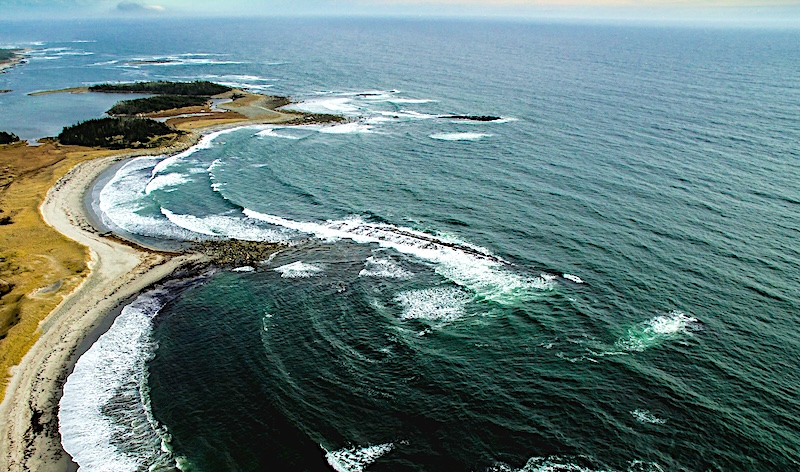
Notice in the image above how the crests of the waves have been bent as parts of the waves refract into shallower water at the edge of the bays. This effect causes the wave energy to spread out into the bays, reducing the size of the waves that break onto the beach. By contrast, waves tend to focus onto headlands as they usually have shallow water around them, creating larger waves at exposed points.
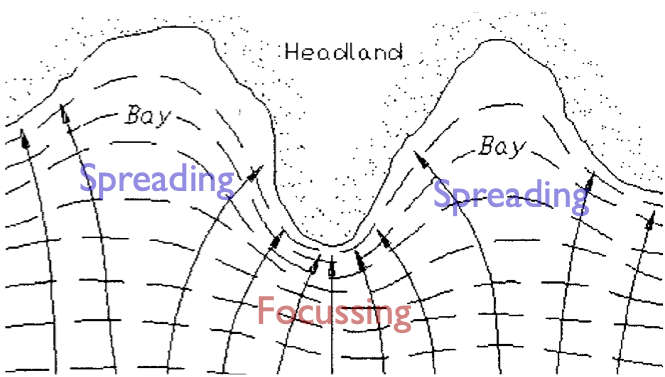
Refraction of waves around bays and headlands
This is one reason why conditions at headlands are often much more demanding than those in the bays in between them. Headlands may also funnel the wind and the tidal stream, further complicating the conditions.
3.3.3 Diffraction
Imagine waves passing through a gap in a breakwater.
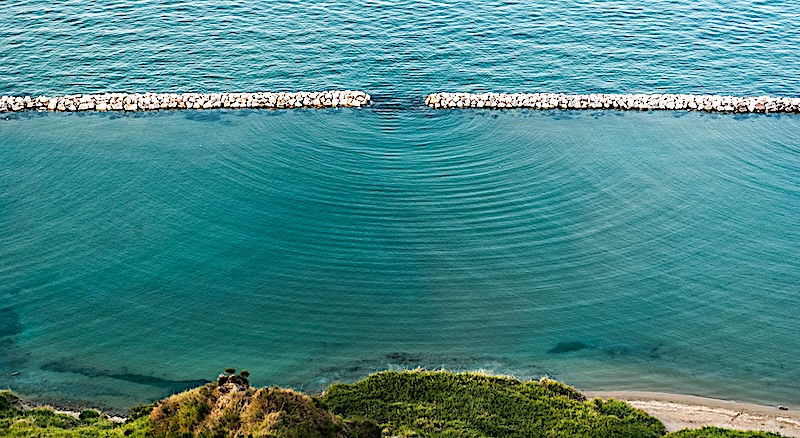
Waves diffracting through a breakwater - iStock/Roberto Lo Savio
It would be strange if the waves passed through the gap and continued in a narrow wave train - think what the edges of those waves would look like - they’d have to be steep walls of water clipped by the edges of the gap. Clearly, gravity will tend to make the waves spread out beyond the gap - as we see in the image above. A similar thing happens when waves pass the end of a pier or a headland:
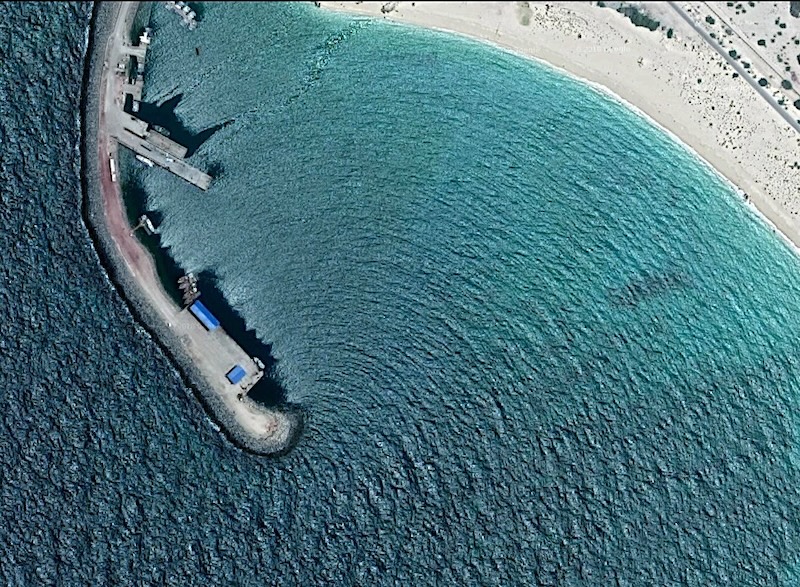
Diffraction around a pier - Google Earth image
The process by which waves bend behind obstructions is known as diffraction. The result is that there might be less shelter from waves than we expect. However, because the wave energy spreads out as the wave diffracts, the wave will be smaller behind the obstruction.
Let’s look a bit more closely at what might happen in a slightly larger scale example.
A 2 metre swell is coming from the west-southwest along the north coast of Cornwall. What wave conditions might you expect in St. Ives Bay?
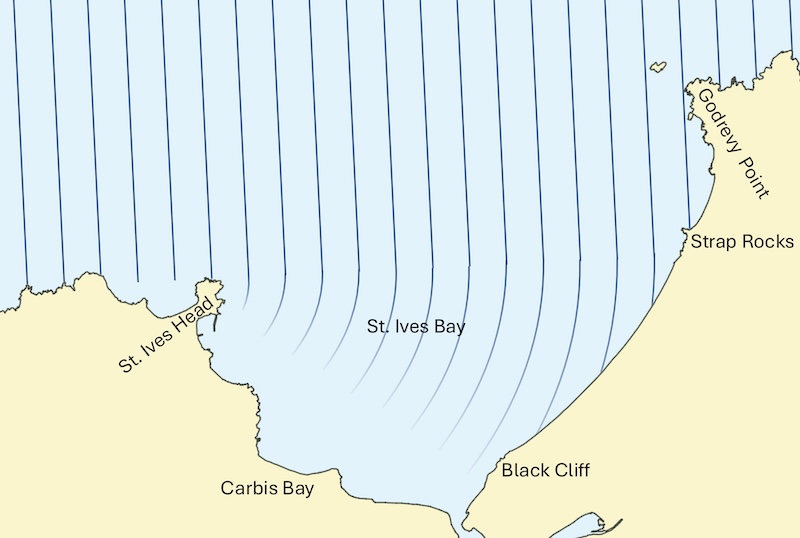
We might expect a swell pattern something like that sketched on the map above. The waves pass St.Ives Head and diffract into St.Ives Bay. We’d expect there to be some areas behind St. Ives Head that are almost completely sheltered - for example, around the harbour to the south of the Head. This shelter might extend down to Carbis Bay, although there may be some small waves here. A long beach extends from Carbis Bay almost as far as Godrevy Point. We’d expect the size of the waves to increase as we head north-east along this bay. By Black Cliff we’d expect some significant waves, with wave size increasing to around full height by Strap Rocks. Godrevy Point will likely have even larger waves due to refraction towards the headland (not shown on the map).
These sort of conditions might be ideal for a kayak surfing session. If you get in at Carbis Bay, you can paddle east until the waves are large enough to be interesting, then either retreat back west for mellower conditions or head further east for bigger waves as you get more confident.
Diffraction of waves depends on wave period. If the swell coming in contains shorter wave periods, we may find that these shorter waves get diffracted less, so that only the longer waves exist at Black Cliff. This might generate cleaner surf than elsewhere on the coastline.
Waves will also diffract around islands. Whilst there will be some shelter from the waves behind the island, further out there may be an area where waves diffracted from either side of the island meet each other and cause a confused wave pattern that may be difficult to paddle in:
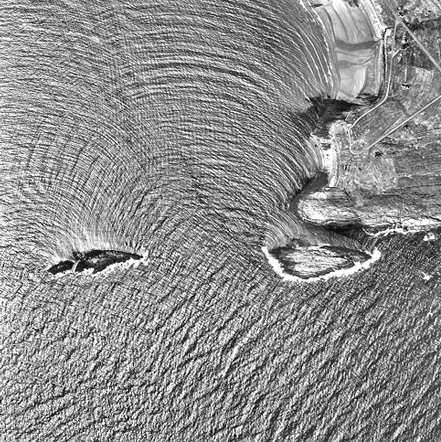
Diffracted waves. Notice the interference pattern formed behind the island.
3.3.4 Reflection
Waves hitting vertical cliffs will reflect back and interfere with the incident waves. This creates a pattern of larger and sharper waves that can be challenging to paddle in.
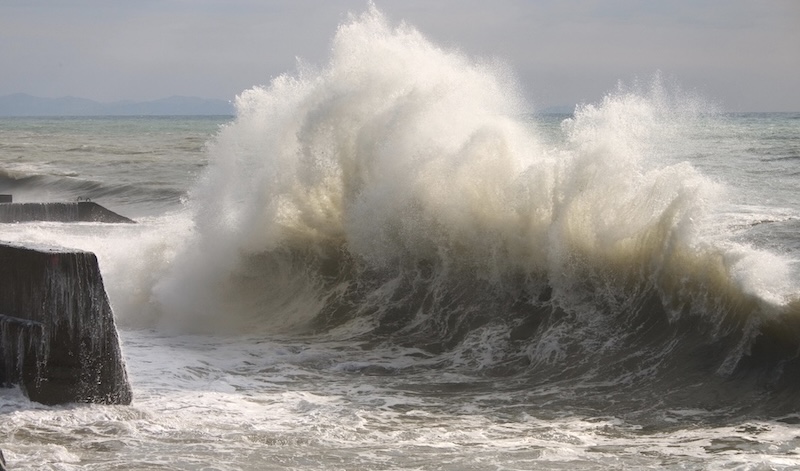
Extreme example of clapotis caused by waves reflecting off a sea wall and interfering with incident waves. Photo: YuriyVZ/iStock
When the waves don’t hit the cliff square on, the interference pattern can be more complex, creating a confused sea with a diamond pattern of waves with peaks forming at points:

Paddling in a complex reflected wave pattern
3.3.5 Reefs and boomers
Waves break when they enter shallow water. Normally, it’s obvious where this will happen - on a beach or against cliffs. Sometimes, waves will break on an underwater reef. This is especially problematic if the depth of the reef is such that only the largest waves will break over it. A paddler might paddle over the reef, not having seen any problems, only to have the biggest wave of the day break over them.